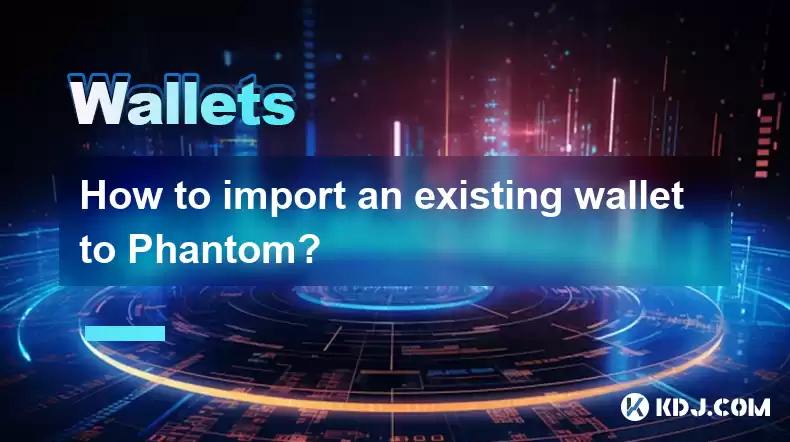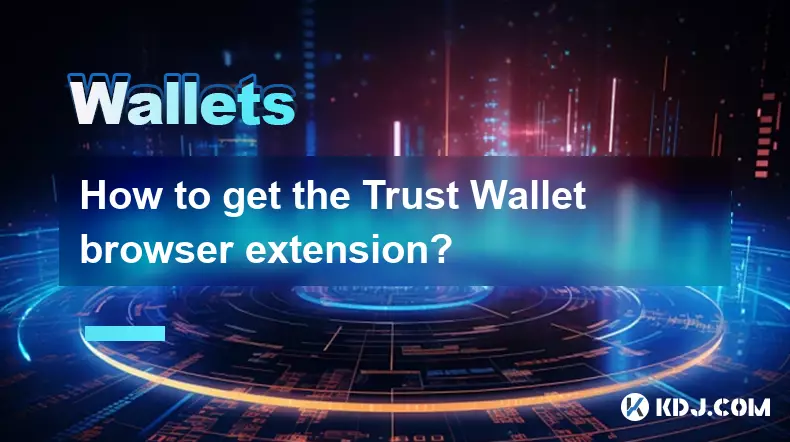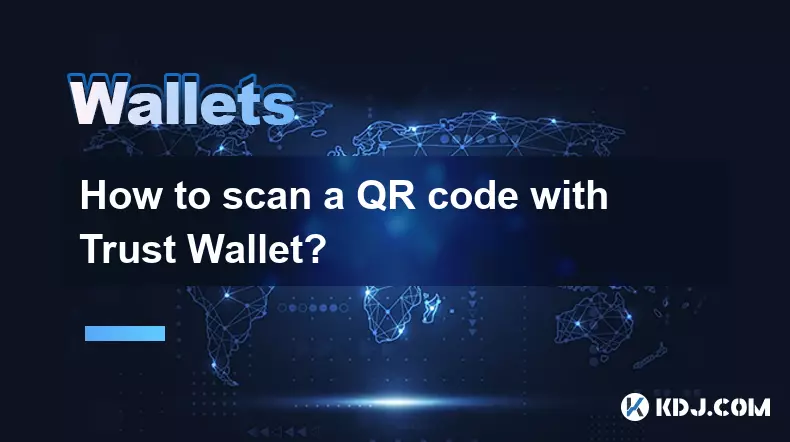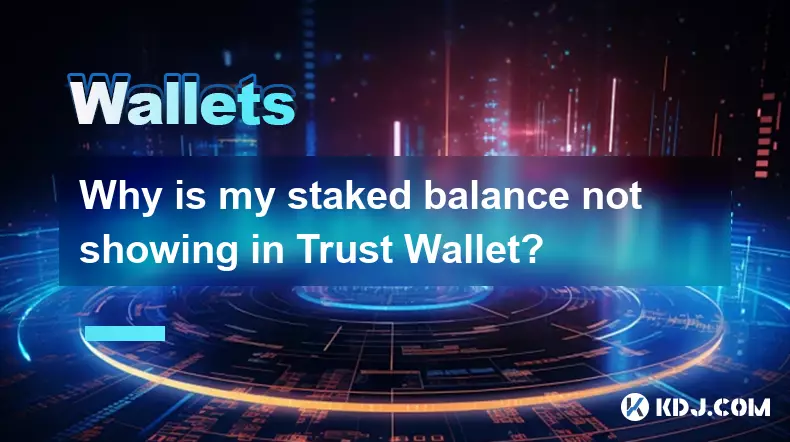-
 bitcoin
bitcoin $122090.672462 USD
1.59% -
 ethereum
ethereum $4493.758974 USD
0.56% -
 xrp
xrp $3.033145 USD
0.65% -
 tether
tether $1.000629 USD
0.00% -
 bnb
bnb $1169.854250 USD
7.07% -
 solana
solana $230.954786 USD
-0.19% -
 usd-coin
usd-coin $0.999785 USD
0.00% -
 dogecoin
dogecoin $0.256108 USD
-1.12% -
 tron
tron $0.342333 USD
-0.12% -
 cardano
cardano $0.859632 USD
-0.10% -
 hyperliquid
hyperliquid $48.932146 USD
-2.25% -
 chainlink
chainlink $22.345466 USD
-1.29% -
 ethena-usde
ethena-usde $1.000217 USD
-0.03% -
 avalanche
avalanche $31.203456 USD
1.93% -
 sui
sui $3.579145 USD
1.05%
How to import an existing wallet to Phantom?
Phantom wallet supports importing Solana, Ethereum, and Polygon wallets using seed phrases or private keys for seamless asset management across blockchains.
Apr 24, 2025 at 06:35 pm

Introduction to Phantom Wallet
Phantom is a popular non-custodial wallet that supports multiple blockchains, including Solana, Ethereum, and Polygon. It allows users to manage their cryptocurrencies, NFTs, and decentralized applications (dApps) securely. One of the key features of Phantom is the ability to import existing wallets, which makes it easier for users to manage their assets across different platforms. In this article, we will guide you through the process of importing an existing wallet to Phantom, ensuring you can seamlessly transition your assets.
Preparing for Wallet Import
Before you start the process of importing your wallet to Phantom, it's essential to ensure you have all the necessary information at hand. You will need your seed phrase or private key, depending on the type of wallet you are importing. Make sure you keep this information secure and do not share it with anyone.
Additionally, ensure that you have the latest version of the Phantom wallet installed on your device. You can download it from the official Phantom website or the respective app stores for mobile devices.
Importing a Solana Wallet to Phantom
If you have an existing Solana wallet, importing it to Phantom is a straightforward process. Here's how you can do it:
- Open the Phantom Wallet: Launch the Phantom app on your device.
- Go to the Settings: Click on the settings icon, usually located at the top right corner of the app.
- Select 'Import Wallet': In the settings menu, find and select the 'Import Wallet' option.
- Choose 'Solana': Since you are importing a Solana wallet, select 'Solana' from the list of available blockchains.
- Enter Your Seed Phrase: You will be prompted to enter your 12 or 24-word seed phrase. Carefully type in each word in the correct order.
- Confirm and Import: After entering the seed phrase, confirm the action to import your wallet. Phantom will then process the information and display your imported wallet.
Importing an Ethereum Wallet to Phantom
For those who have an existing Ethereum wallet, Phantom also supports importing it. Follow these steps to import your Ethereum wallet:
- Open the Phantom Wallet: Start by opening the Phantom app on your device.
- Navigate to Settings: Click on the settings icon in the app.
- Choose 'Import Wallet': From the settings menu, select the 'Import Wallet' option.
- Select 'Ethereum': Choose 'Ethereum' from the list of supported blockchains.
- Enter Your Private Key: You will need to enter your Ethereum private key. Make sure to enter it accurately.
- Confirm and Import: After entering the private key, confirm the action to import your wallet. Phantom will then process the information and display your imported Ethereum wallet.
Importing a Polygon Wallet to Phantom
Similar to Solana and Ethereum, Phantom also supports importing wallets from the Polygon network. Here's how you can import your Polygon wallet:
- Open the Phantom Wallet: Launch the Phantom app on your device.
- Access the Settings: Click on the settings icon within the app.
- Select 'Import Wallet': In the settings menu, choose the 'Import Wallet' option.
- Choose 'Polygon': Select 'Polygon' from the list of available blockchains.
- Enter Your Private Key: You will need to enter your Polygon private key. Ensure you enter it correctly.
- Confirm and Import: After entering the private key, confirm the action to import your wallet. Phantom will then process the information and display your imported Polygon wallet.
Troubleshooting Common Issues
While importing a wallet to Phantom is generally a smooth process, you might encounter some issues. Here are some common problems and their solutions:
- Incorrect Seed Phrase or Private Key: If you receive an error message stating that your seed phrase or private key is incorrect, double-check your entry. Ensure there are no typos or missing words.
- Wallet Not Displaying Assets: If your wallet is successfully imported but your assets are not displaying, try refreshing the app or restarting your device.
- Network Connection Issues: Ensure you have a stable internet connection, as network issues can prevent the wallet from importing correctly.
Security Tips for Importing Wallets
Importing a wallet to Phantom is a sensitive process that requires careful attention to security. Here are some tips to keep your assets safe:
- Use a Secure Environment: Always import your wallet in a secure environment, free from prying eyes and potential malware.
- Keep Your Seed Phrase and Private Key Private: Never share your seed phrase or private key with anyone. These are the keys to your wallet, and sharing them can lead to unauthorized access.
- Enable Two-Factor Authentication: If available, enable two-factor authentication on your Phantom wallet for an added layer of security.
Frequently Asked Questions
Q: Can I import multiple wallets to Phantom?Yes, you can import multiple wallets to Phantom. Each wallet can be imported separately by following the steps outlined for the respective blockchain.
Q: What happens if I lose my seed phrase or private key after importing my wallet to Phantom?If you lose your seed phrase or private key, you will not be able to recover your wallet. It is crucial to store these securely, preferably in multiple safe locations.
Q: Is it possible to import a wallet from another non-custodial wallet to Phantom?Yes, you can import wallets from other non-custodial wallets to Phantom as long as they support the same blockchain and you have the necessary seed phrase or private key.
Q: Can I import a wallet to Phantom on multiple devices?Yes, you can import the same wallet to Phantom on multiple devices using the same seed phrase or private key. However, ensure that you keep your devices secure to prevent unauthorized access.
Disclaimer:info@kdj.com
The information provided is not trading advice. kdj.com does not assume any responsibility for any investments made based on the information provided in this article. Cryptocurrencies are highly volatile and it is highly recommended that you invest with caution after thorough research!
If you believe that the content used on this website infringes your copyright, please contact us immediately (info@kdj.com) and we will delete it promptly.
- BlockDAG, DOGE, HYPE Sponsorship: Crypto Trends Shaping 2025
- 2025-10-01 00:25:13
- Deutsche Börse and Circle: A StableCoin Adoption Powerhouse in Europe
- 2025-10-01 00:25:13
- BlockDAG's Presale Buzz: Is It the Crypto to Watch in October 2025?
- 2025-10-01 00:30:13
- Bitcoin, Crypto, and IQ: When Genius Meets Digital Gold?
- 2025-10-01 00:30:13
- Stablecoins, American Innovation, and Wallet Tokens: The Next Frontier
- 2025-10-01 00:35:12
- NBU, Coins, and Crypto in Ukraine: A New Yorker's Take
- 2025-10-01 00:45:14
Related knowledge

How to sync my Trust Wallet with the browser extension?
Oct 03,2025 at 06:19pm
Understanding Trust Wallet and Browser Extension IntegrationTrust Wallet is a popular non-custodial cryptocurrency wallet that supports a wide range o...

How to check if a token is supported by Trust Wallet?
Oct 04,2025 at 05:18am
Understanding Token Compatibility with Trust Wallet1. Trust Wallet supports a wide range of blockchain networks, including Ethereum, Binance Smart Cha...

How to get the Trust Wallet browser extension?
Oct 01,2025 at 12:37am
How to Access the Trust Wallet Browser Extension1. Visit the official Trust Wallet website through a secure internet connection. Navigate to the downl...

How to interact with a DApp using Trust Wallet?
Oct 02,2025 at 10:00pm
Connecting Trust Wallet to a DApp1. Open the Trust Wallet app on your mobile device and ensure your wallet is unlocked with access to your assets. Nav...

How to scan a QR code with Trust Wallet?
Oct 02,2025 at 03:37pm
Understanding QR Codes in Trust Wallet1. QR codes are widely used in cryptocurrency applications to simplify transaction processes. Trust Wallet lever...

Why is my staked balance not showing in Trust Wallet?
Oct 01,2025 at 12:54am
Understanding Decentralized Exchanges in the Crypto Ecosystem1. Decentralized exchanges (DEXs) operate without a central authority, allowing users to ...

How to sync my Trust Wallet with the browser extension?
Oct 03,2025 at 06:19pm
Understanding Trust Wallet and Browser Extension IntegrationTrust Wallet is a popular non-custodial cryptocurrency wallet that supports a wide range o...

How to check if a token is supported by Trust Wallet?
Oct 04,2025 at 05:18am
Understanding Token Compatibility with Trust Wallet1. Trust Wallet supports a wide range of blockchain networks, including Ethereum, Binance Smart Cha...

How to get the Trust Wallet browser extension?
Oct 01,2025 at 12:37am
How to Access the Trust Wallet Browser Extension1. Visit the official Trust Wallet website through a secure internet connection. Navigate to the downl...

How to interact with a DApp using Trust Wallet?
Oct 02,2025 at 10:00pm
Connecting Trust Wallet to a DApp1. Open the Trust Wallet app on your mobile device and ensure your wallet is unlocked with access to your assets. Nav...

How to scan a QR code with Trust Wallet?
Oct 02,2025 at 03:37pm
Understanding QR Codes in Trust Wallet1. QR codes are widely used in cryptocurrency applications to simplify transaction processes. Trust Wallet lever...

Why is my staked balance not showing in Trust Wallet?
Oct 01,2025 at 12:54am
Understanding Decentralized Exchanges in the Crypto Ecosystem1. Decentralized exchanges (DEXs) operate without a central authority, allowing users to ...
See all articles










































































